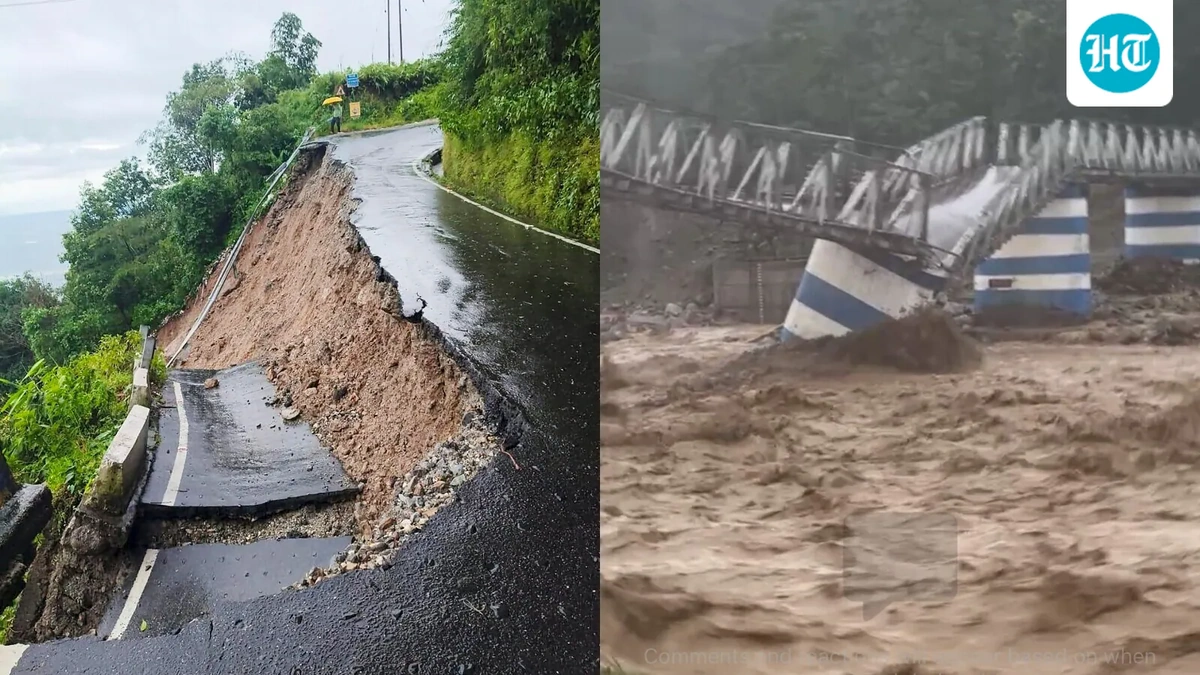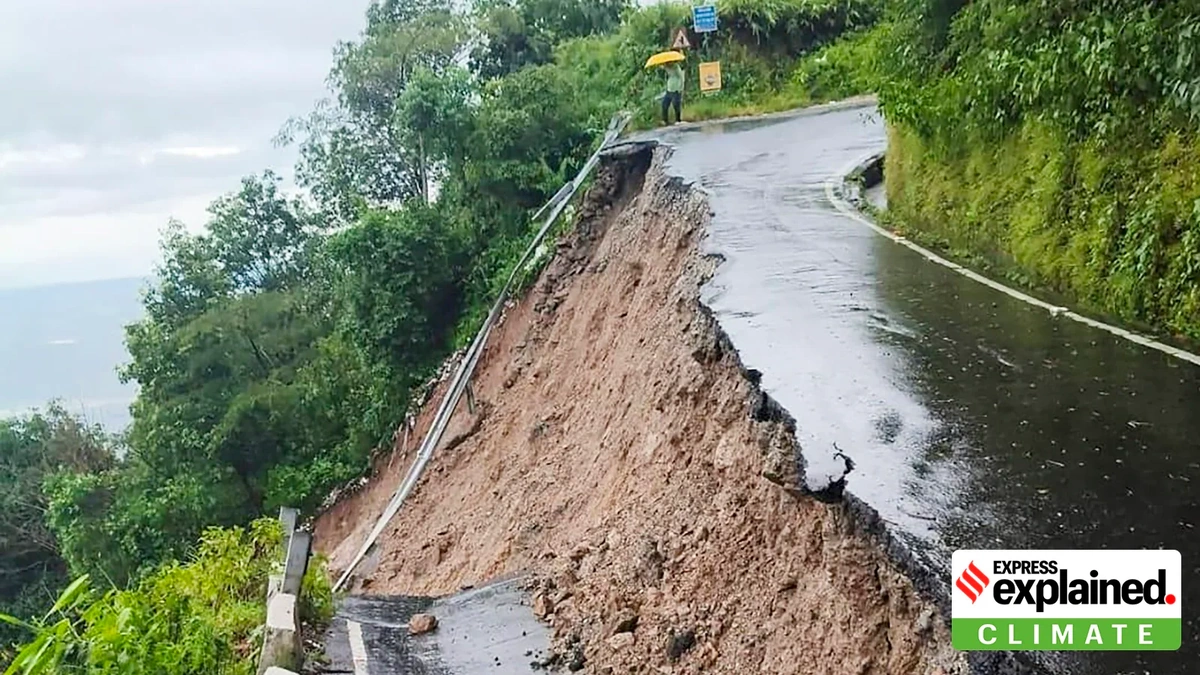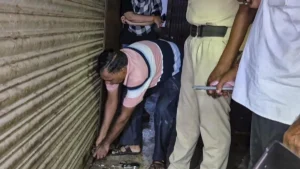Darjeeling Landslide | Family Tragedy as Three Die in Sleep
The news hit like a punch to the gut: a Darjeeling landslide claimed three lives, a family swallowed whole in their sleep. It’s easy to skim past such headlines, another tragic story in a world overflowing with them. But, honestly, we can’t afford to. Not when it comes to understanding the why behind these disasters, and what they mean for the future of our fragile Himalayan ecosystem. And more importantly, what can be done to prevent such tragedies. Check out this
This isn’t just about a natural disaster ; it’s a story woven with threads of climate change, urbanization, and the very delicate balance of mountain life. So, let’s dig deeper, shall we?
The Unseen Culprits Behind the Landslide

Here’s the thing: landslides aren’t random acts of nature. They’re often the result of a complex interplay of factors, many of which are, sadly, human-induced. Consider the environmental impact . The Himalayas, a young and actively rising mountain range, are inherently prone to landslides. But when you add unchecked construction, deforestation, and erratic rainfall patterns (thanks, climate change!), you’ve got a recipe for disaster.
Deforestation weakens the soil structure, robbing it of its natural anchors – tree roots. Unplanned construction, especially on steep slopes, destabilizes the land even further. And then there’s the increasingly unpredictable monsoon season, dumping massive amounts of water in short bursts, saturating the soil and triggering these devastating slips. According to a report by the World Wildlife Fund , the Eastern Himalayas are particularly vulnerable due to a combination of these factors.
A Wake-Up Call for Sustainable Development
The Darjeeling landslide should be a harsh wake-up call. It screams the urgent need for sustainable development in the region. I mean, let’s be real, we can’t just keep building and expanding without considering the consequences. It’s like playing Jenga with the Earth, and eventually, the tower is going to come crashing down.
What does sustainable development even mean in this context? It means stricter regulations on construction, enforced religiously. It means massive reforestation efforts, focusing on native species that can effectively bind the soil. It means investing in early warning systems to alert communities to impending dangers. And, crucially, it means educating the local population about the risks and empowering them to participate in solutions. Climate change adaptation is essential.
The Human Cost | Beyond the Headlines
It’s easy to get lost in the technicalities of soil erosion and climate models, but let’s not forget the human cost. Behind every statistic, there’s a family shattered, a community scarred. Losing three members of a family in their sleep is an unspeakable tragedy. It leaves behind a void that no amount of compensation can ever fill.
We need to move beyond simply reporting these incidents and start focusing on providing long-term support to the affected communities. This includes not just financial assistance, but also counseling, job training, and help in rebuilding their lives. The government and NGOs must work together to create a safety net that catches those who fall victim to these disasters. The importance of web safetyis also a crucial factor for safety in todays world.
Mitigation Strategies | A Path Forward
Okay, so what can be done? What are the concrete steps we can take to mitigate the risk of future landslides? Well, a lot, actually.
Firstly, landslide risk assessment needs to become mandatory before any construction project is approved in vulnerable areas. This assessment should take into account factors like slope stability, soil type, and rainfall patterns. Secondly, engineering solutions like retaining walls and terracing can help stabilize slopes and prevent soil erosion. These measures, while costly, are a necessary investment in the long-term safety of communities.
Thirdly, and perhaps most importantly, we need to empower local communities to become active participants in disaster management. This means training them in early warning techniques, providing them with the tools and resources they need to respond effectively, and involving them in the planning and implementation of mitigation measures.
The Future of Darjeeling | A Precarious Balance
The future of Darjeeling, and other Himalayan regions, hangs in the balance. We’re at a crossroads. We can continue down the path of unsustainable development, ignoring the warning signs and risking more tragedies. Or, we can choose a different path, one that prioritizes environmental protection, community resilience, and long-term sustainability. The choice, ultimately, is ours.
Let’s be honest, it won’t be easy. It will require tough decisions, significant investments, and a fundamental shift in mindset. But if we’re serious about protecting the lives and livelihoods of the people who call these mountains home, there’s no other option.
The Darjeeling disaster isn’t just a local tragedy; it’s a microcosm of the global challenges we face. It’s a reminder that our actions have consequences, and that we’re all interconnected. Let’s learn from this tragedy and work together to build a more sustainable and resilient future for all.
FAQ Section
What causes landslides in Darjeeling?
Landslides in Darjeeling are caused by a combination of factors, including heavy rainfall, deforestation, unstable slopes, and unplanned construction. The region’s geology makes it naturally prone to landslides, but human activities exacerbate the risk. Understanding these factors is crucial for disaster preparedness .
What can residents do to protect themselves from landslides?
Residents can take several steps to protect themselves, such as monitoring weather forecasts, avoiding construction on steep slopes, participating in community disaster preparedness programs, and reporting any signs of instability (e.g., cracks in the ground) to authorities.
How is climate change contributing to landslides in the Himalayas?
Climate change is leading to more erratic rainfall patterns, with intense bursts of precipitation that saturate the soil and increase the risk of landslides. Warmer temperatures are also causing glaciers to melt, further destabilizing slopes and increasing the likelihood of debris flows.
What are the government’s plans for landslide mitigation in the region?
The government is working on implementing several mitigation measures, including constructing retaining walls, promoting reforestation, improving drainage systems, and establishing early warning systems. However, more resources and stronger enforcement are needed to effectively address the problem. The importance of risk reduction strategies should be given more emphasis.
What role do NGOs play in landslide relief and prevention?
NGOs play a crucial role in providing relief to landslide victims, raising awareness about disaster risks, and implementing community-based mitigation projects. They often work in close collaboration with local communities to ensure that mitigation efforts are effective and sustainable.
Where can I find reliable information about landslide risks in my area?
You can find reliable information from government agencies (e.g., the Geological Survey of India), research institutions, and reputable NGOs working in the region. Be sure to cross-reference information from multiple sources to ensure its accuracy.
So, there you have it. The Darjeeling landslide is a terrible tragedy, but it’s also an opportunity. An opportunity to learn, to adapt, and to build a better future. Let’s not waste it.













